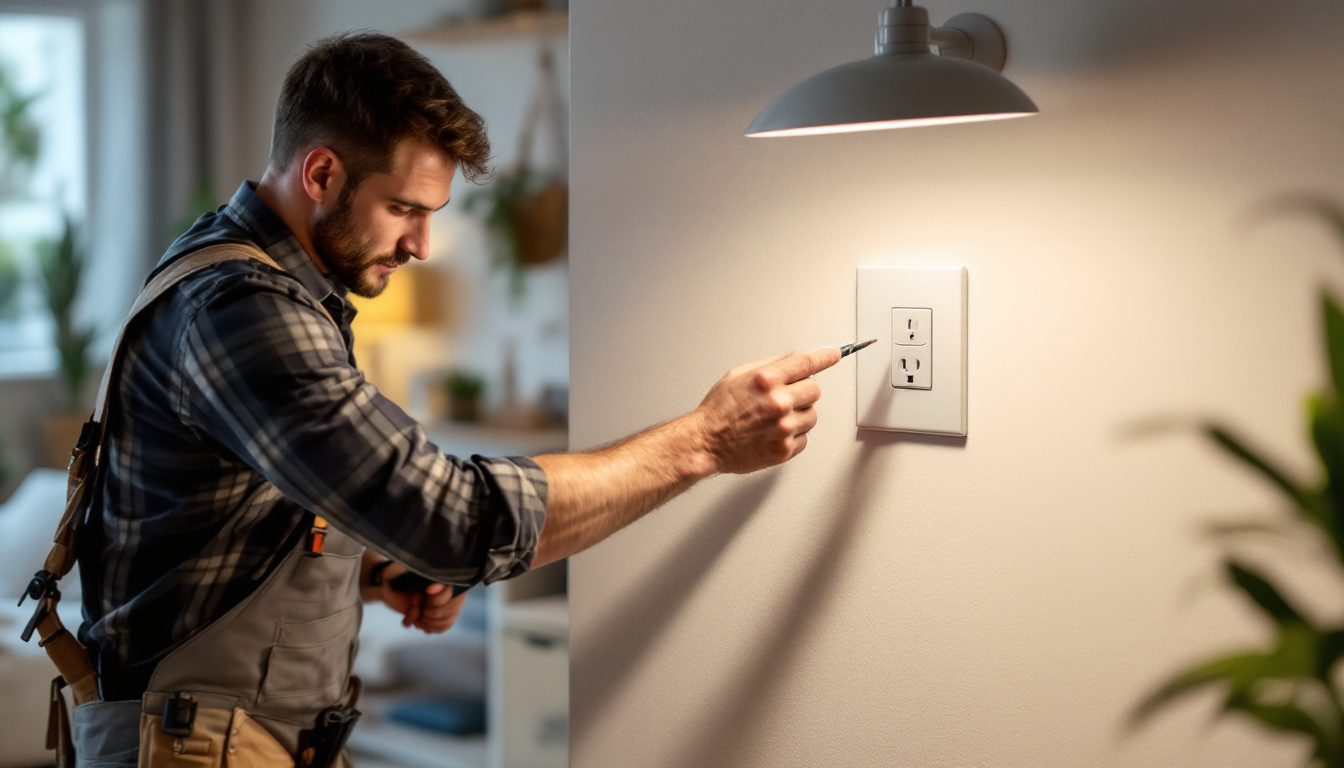

Lighting is an essential aspect of modern living, influencing not just visibility but also mood, productivity, and energy efficiency. For lighting contractors, understanding the current trends and best practices in lightbulb use is crucial for delivering optimal solutions to clients. This article delves into the best practices for lighting contractors, focusing on the types of lightbulbs available, their applications, and how to ensure energy efficiency and sustainability in lighting projects.
With advancements in technology, the market now offers a variety of lightbulb options, each with its unique features and benefits. Familiarity with these types is essential for lighting contractors to make informed recommendations to clients.
Incandescent bulbs have been a staple in the lighting industry for many years. They produce light by heating a filament until it glows, providing a warm, inviting ambiance. However, they are not the most energy-efficient option available. While they offer excellent color rendering and are inexpensive upfront, their high energy consumption and shorter lifespan make them less favorable in energy-conscious projects. Additionally, incandescent bulbs are often favored for their ability to create a cozy atmosphere, making them a popular choice for residential spaces such as living rooms and dining areas. Despite the push for more energy-efficient alternatives, many consumers still appreciate the nostalgic charm and immediate brightness that incandescent bulbs provide.
CFLs are a more energy-efficient alternative to incandescent bulbs. They use a fraction of the energy and have a longer lifespan, making them a cost-effective choice for both residential and commercial applications. However, CFLs contain a small amount of mercury, which requires careful disposal. Lighting contractors should inform clients about proper disposal methods to minimize environmental impact. Furthermore, CFLs tend to take a moment to reach their full brightness, which can be a drawback in situations where instant light is needed. Despite this, their ability to produce a variety of color temperatures makes them versatile for different settings, from warm tones in cozy spaces to cooler hues in work environments.
LEDs have revolutionized the lighting industry with their exceptional energy efficiency and longevity. They consume significantly less power than both incandescent and CFL bulbs and can last up to 25 times longer. Their versatility makes them suitable for a wide range of applications, from residential to industrial settings. As a lighting contractor, promoting LED solutions can enhance client satisfaction and contribute to sustainability goals. Additionally, LEDs are available in an array of shapes, sizes, and colors, allowing for creative lighting designs that can transform any space. The ability to dim LEDs and control them via smart technology further enhances their appeal, making them an ideal choice for modern homes and businesses looking to integrate energy-efficient solutions with cutting-edge technology. With the growing trend towards smart homes, educating clients about the benefits of LED technology can position contractors as informed professionals in the evolving lighting landscape.
Not all lighting applications are created equal, and selecting the right bulb is paramount for achieving the desired effect. Factors such as brightness, color temperature, and intended use should guide the decision-making process.
Brightness is measured in lumens, and understanding this metric is crucial for lighting contractors. Clients may often refer to wattage when discussing brightness, but lumens provide a more accurate representation of how much light a bulb emits. For instance, a 60-watt incandescent bulb produces about 800 lumens. When recommending bulbs, it’s essential to match the lumens to the client’s specific needs, ensuring adequate illumination without excess energy consumption. Additionally, it’s worth noting that the efficiency of LED bulbs can produce the same lumens as traditional incandescent bulbs while using significantly less wattage, making them a more sustainable choice in the long run. This efficiency not only reduces energy bills but also contributes to a lower carbon footprint, which is increasingly important to environmentally conscious clients.
Color temperature, measured in Kelvin (K), affects the ambiance of a space. Lower Kelvin values (2700K-3000K) produce a warm, cozy light, ideal for residential settings, while higher values (4000K-5000K) yield a cooler, more energizing light suitable for commercial environments. Educating clients about color temperature can help them create the desired atmosphere in their spaces. For example, restaurants often utilize warmer light to create an inviting atmosphere, encouraging patrons to linger, whereas retail stores may prefer cooler light to enhance product visibility and stimulate shopping behavior. Understanding these psychological effects of color temperature can empower clients to make informed choices that enhance their spaces.
Some applications require specialized lighting solutions. For example, task lighting in offices may need brighter, cooler light to enhance focus, while accent lighting in galleries should highlight artwork without altering colors. Understanding these nuances allows lighting contractors to tailor their recommendations, ensuring that each project meets the client’s specific requirements. Furthermore, in environments such as hospitals, lighting must not only be functional but also promote healing; studies have shown that the right lighting can positively affect patient recovery times. By considering the specific needs of each environment, contractors can provide solutions that not only meet aesthetic goals but also support the well-being and productivity of the occupants.
As energy costs rise and environmental concerns grow, energy efficiency has become a top priority for many clients. Lighting contractors play a vital role in promoting sustainable practices through their choice of lightbulbs and designs.
Energy Star is a certification program that identifies energy-efficient products. Lighting contractors should prioritize recommending Energy Star-certified bulbs, as they meet strict efficiency guidelines. These products not only help clients save on energy bills but also contribute to reducing carbon footprints. Educating clients about the benefits of Energy Star products can foster trust and position contractors as knowledgeable professionals.
Smart lighting technology has gained popularity, allowing clients to control their lighting remotely and optimize energy use. Features such as dimming and scheduling can significantly reduce energy consumption. Lighting contractors should stay updated on the latest smart lighting systems and be prepared to integrate these solutions into their projects. Demonstrating the advantages of smart lighting can enhance client engagement and satisfaction.
Proper disposal and recycling of lightbulbs are essential for minimizing environmental impact. Contractors should educate clients on how to dispose of different types of bulbs responsibly. For instance, many communities have recycling programs for CFLs and LEDs, which contain materials that can be harmful if thrown in the trash. By promoting responsible disposal practices, lighting contractors can further demonstrate their commitment to sustainability.
Effective installation is critical for maximizing the performance and lifespan of lightbulbs. Lighting contractors should adhere to best practices to ensure safety, efficiency, and client satisfaction.
The choice of light fixtures can significantly impact the effectiveness of the lightbulbs used. Contractors should ensure that fixtures are compatible with the selected bulbs, considering factors such as wattage limits and heat dissipation. Using fixtures designed for specific bulb types can enhance performance and safety, reducing the risk of overheating or electrical issues.
Placement and spacing of light fixtures are crucial for achieving uniform illumination. Contractors should consider the layout of the space and the intended use when determining fixture placement. For example, in a kitchen, task lighting should be positioned over work areas, while ambient lighting can be distributed evenly throughout the room. Proper planning can prevent dark spots and ensure a well-lit environment.
After installation, it’s essential to test the lighting to ensure it meets the client’s expectations. Contractors should assess brightness levels, color temperature, and overall ambiance. If adjustments are needed, such as changing bulb types or repositioning fixtures, they should be made promptly. This attention to detail can enhance client satisfaction and lead to positive referrals.
The lighting industry is constantly evolving, with new technologies and trends emerging regularly. Lighting contractors must stay informed to provide the best service to their clients.
Participating in workshops, seminars, and training programs can help contractors stay updated on the latest advancements in lighting technology and design. Many manufacturers offer training sessions on their products, providing valuable insights into installation techniques and energy efficiency. Investing time in education can enhance a contractor’s expertise and credibility.
Building relationships with other professionals in the lighting industry can provide valuable insights and resources. Networking can lead to collaborations, referrals, and shared knowledge about best practices. Joining industry associations and attending trade shows can also expose contractors to new products and innovations.
The internet is a treasure trove of information for lighting contractors. Online forums, blogs, and industry publications can provide updates on trends, technologies, and best practices. Engaging with online communities can also facilitate discussions and knowledge sharing, helping contractors stay ahead in the competitive landscape.
In the ever-evolving world of lighting, contractors play a crucial role in guiding clients toward the best solutions for their needs. By understanding the different types of lightbulbs, choosing the right products for specific applications, promoting energy efficiency, adhering to installation best practices, and staying informed about industry trends, lighting contractors can enhance their service offerings and contribute to a more sustainable future.
As the demand for energy-efficient and aesthetically pleasing lighting continues to grow, so does the responsibility of lighting contractors. Embracing these best practices not only fosters client satisfaction but also positions contractors as leaders in the industry, paving the way for continued success in their careers.
Ready to elevate your lighting projects with the best products on the market? Look no further than LumenWholesale, where we provide contractors with spec-grade lighting solutions at unbeatable wholesale prices. Our commitment to quality and affordability ensures that you can implement all the best practices mentioned in this article without breaking the bank. Say goodbye to inflated markups and hello to a vast selection of industry-standard, reliable lighting options. Plus, with free shipping on bulk orders, you can stock up on premium lighting effortlessly. Don’t compromise on quality or cost—choose Wholesale Lighting at the Best Value and make LumenWholesale your go-to source for all your lighting needs.

Discover the hidden pitfalls of purchasing UV disinfecting lights and air purifier fixtures in bulk from local distributors.

Discover how lighting contractors can enhance their projects by integrating light switches with outlets.

Discover why sourcing canopy lights in bulk from local distributors might not be the best choice for your business.

Discover the transformative power of lighting strips with expert insights from top lighting contractors.
Get notified when NEW deals are released.
Optimize your budget with wholesale discounts.
Only top-quality, specification-grade lighting products.
No additional costs at checkout - what you see is what you pay.
We understand the unique needs of contractors.